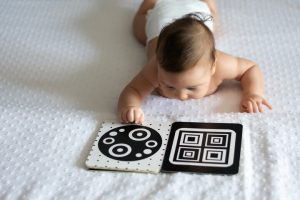
Although we learn so much in our early years, as adults we cannot remember specific events from that time. Researchers have long believed that we do not retain these experiences because the part of the brain responsible for storing memories—the hippocampus—continues to develop well into puberty and is simply unable to store memories in our earliest years. However, new research from Yale University provides evidence that this is not the case. In one study, Yale researchers showed infants new images and later tested whether they could remember them. When an infant’s hippocampus was more active when first viewing an image, they were more likely to recognize that image later. The results show that memories can indeed be stored in our brains during the first years of life. The researchers are now investigating what happens to these memories over time.
How Babies Remember
Our inability to remember specific events from the first years of life is called “infantile amnesia.” However, researching this phenomenon is difficult. “The unique thing about these types of memories, which we call episodic memories, is that you can describe them to others, which is obviously not possible with infants who cannot yet speak,” explains Nick Turk-Browne, professor of psychology at Yale Faculty of Arts and Sciences, director of the Wu Tsai Institute at Yale University, and lead author of the study. For the study, the researchers wanted to find a reliable method for testing infants’ episodic memories. The team, led by Tristan Yates, then a doctoral student and now a postdoctoral fellow at Columbia University, showed infants aged four months to two years pictures of new faces, objects, or scenes. Later, after the infants had seen several other pictures, the researchers showed them a previously seen picture alongside a new picture. “When babies have seen something only once, we expect them to look at it more closely when they see it again,” Turk-Browne said. ”So if an infant looks at the previously seen image longer than the new image next to it in this task, this can be interpreted as the baby recognizing it as familiar.”
How the Hippocampus Develops to Support Learning and Memory
In the new study, the research team, which has pioneered functional magnetic resonance imaging (fMRI) in awake infants over the past decade (which has been difficult due to infants’ short attention spans and inability to sit still or follow instructions), measured activity in the infants’ hippocampus while they viewed the images. In particular, the researchers investigated whether activity in the hippocampus was related to the strength of an infant’s memories. They found that the stronger the activity in the hippocampus when an infant looked at a new image, the longer they looked at it when it reappeared later. And the rear part of the hippocampus (the part closer to the back of the head), where encoding activity was strongest, is the same area that is most strongly associated with episodic memory in adults. These results were true for the entire sample of 26 infants, but were most pronounced in infants over 12 months of age (half of the sample). This age effect leads to a more complete theory of how the hippocampus develops to support learning and memory.

Previously, the research team had found that the hippocampus of infants as young as three months old exhibits a different type of memory called “statistical learning.” While episodic memory stores specific events, such as eating out with guests the night before, statistical learning involves recognizing patterns between events, such as the appearance of restaurants, the neighborhoods where certain dishes are served, or the typical sequence of being seated and served. These two types of memory use different neural pathways in the hippocampus. In previous animal studies, researchers have shown that the pathway for statistical learning, located in the front part of the hippocampus (the area closer to the front of the head), develops earlier than the pathway for episodic memory. Turk-Browne therefore hypothesized that episodic memory may emerge later in infancy, around the age of one year or older. He argues that this developmental progression makes sense when considering the needs of infants.
Memories May Persist Until Preschool Age
According to the researcher, statistical learning is about extracting structures from the world around us. This is crucial for the development of language, vision, concepts, and much more. It is therefore understandable why statistical learning may come into play earlier than episodic memory. Nevertheless, the research team’s latest study shows that episodic memories can be encoded by the hippocampus earlier than previously thought, long before we as adults can report our earliest memories. So what happens to these memories?
There are several possibilities. One is that the memories are not transferred to long-term memory and therefore simply do not last long. Another is that the memories are still present long after encoding, but we simply cannot access them. Turk-Browne suspects that the latter is the case. In ongoing work, Turk-Browne’s team is testing whether infants, toddlers, and children can remember home videos taken from their perspective as (younger) babies. Preliminary results show that these memories may persist until preschool age before fading. The new findings led by Yates provide an important link. “Tristan’s work in humans is remarkably consistent with current animal evidence that infantile amnesia is a problem of retrievability,” Turk-Browne said. The researchers are working to investigate the persistence of hippocampal memories throughout childhood and are even beginning to consider the radical, almost science fiction-like possibility that they may persist in some form into adulthood, even though they are not accessible.


